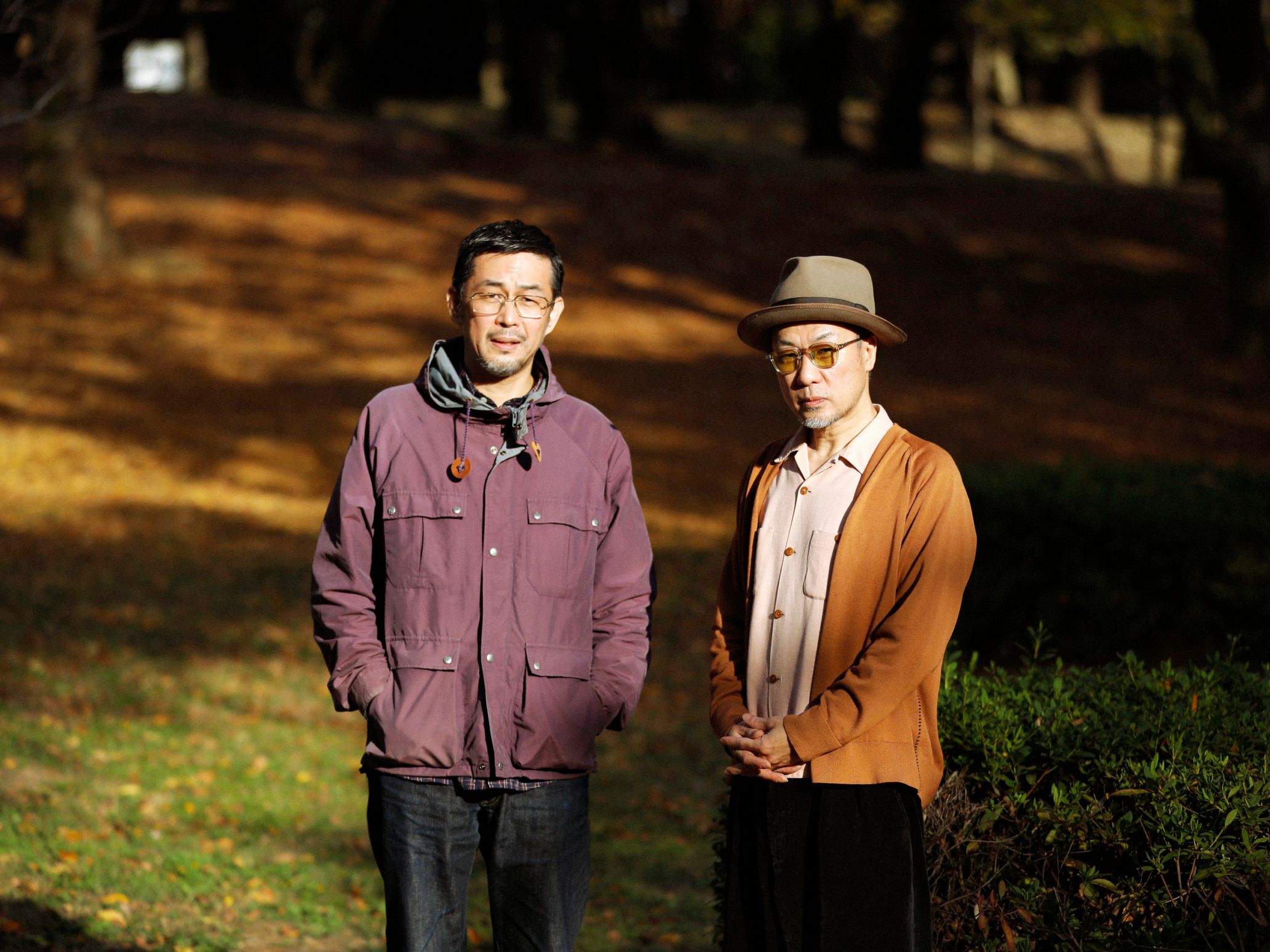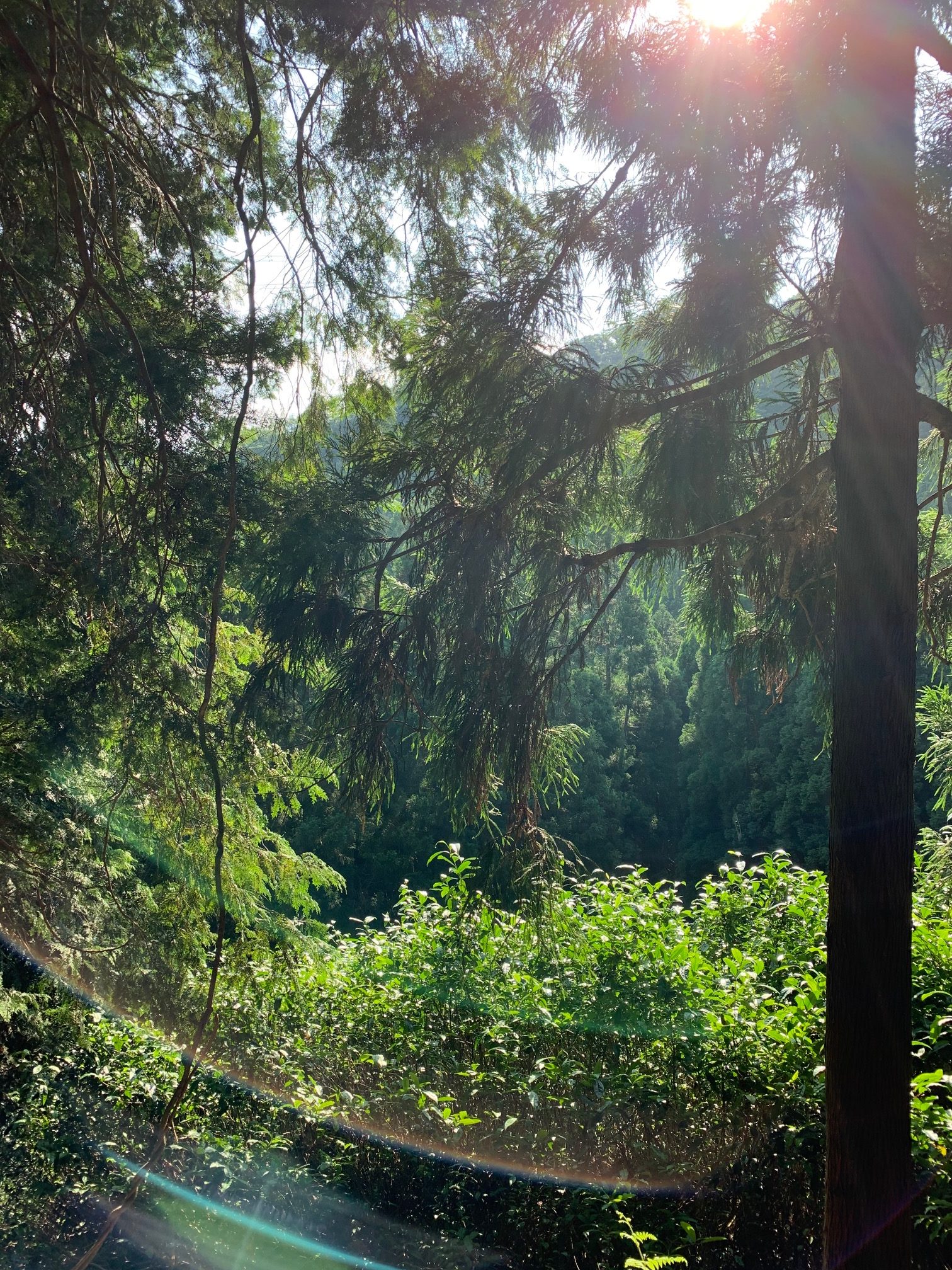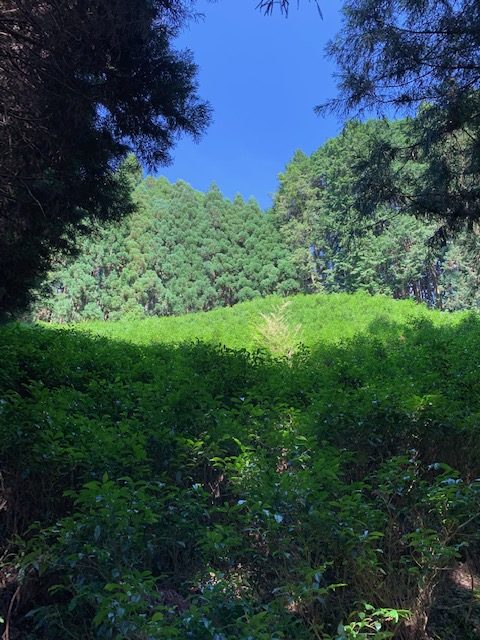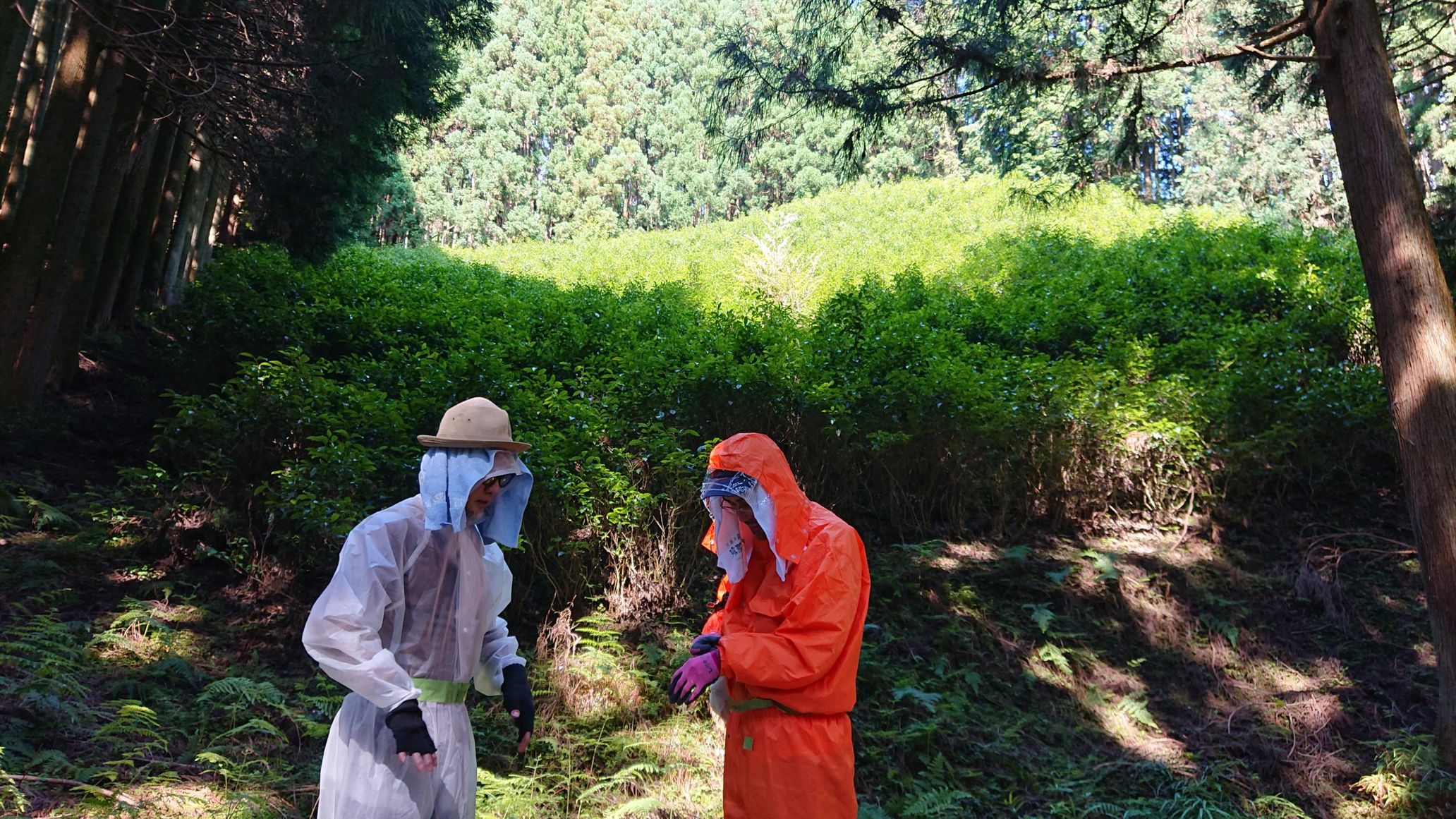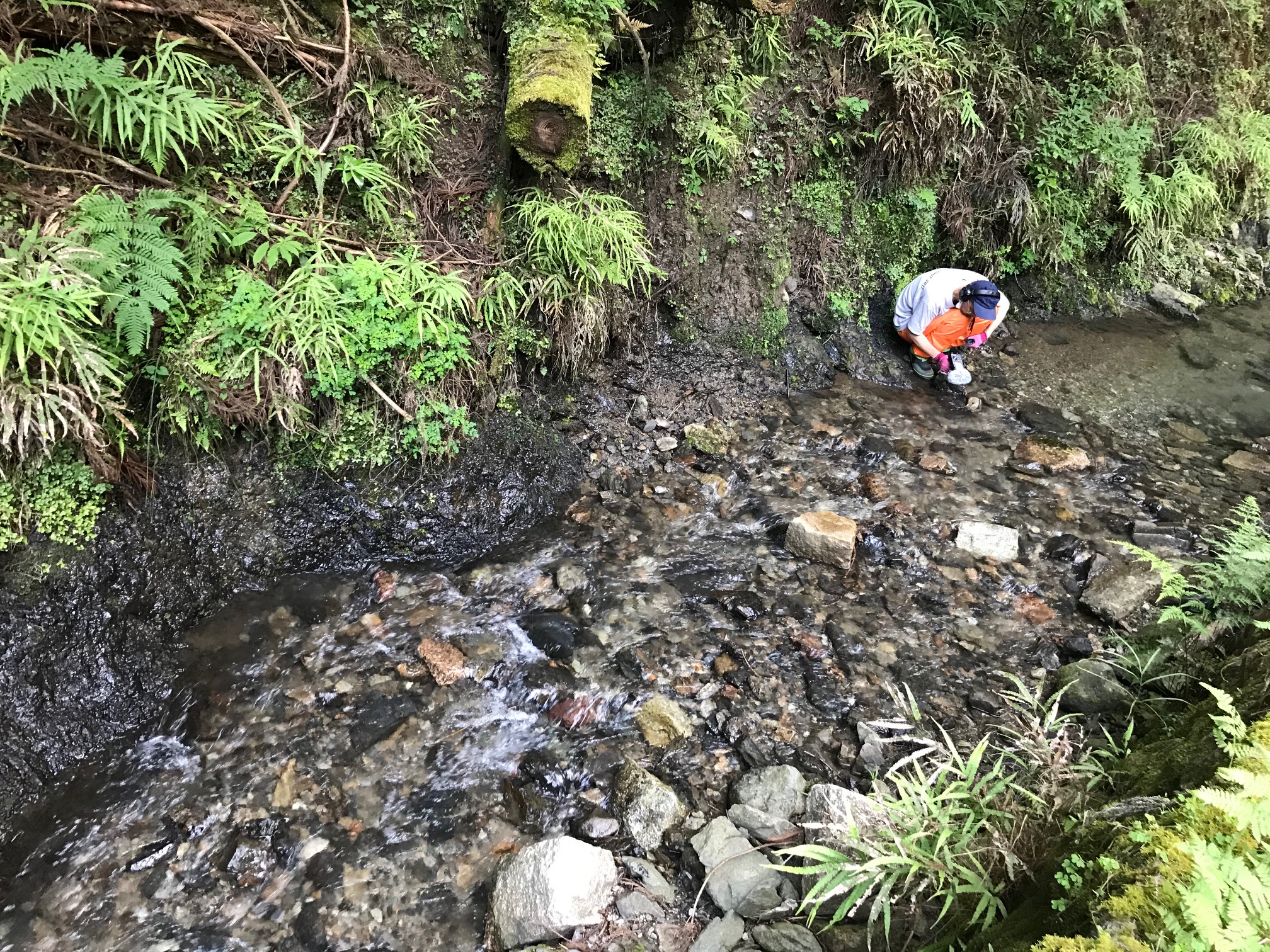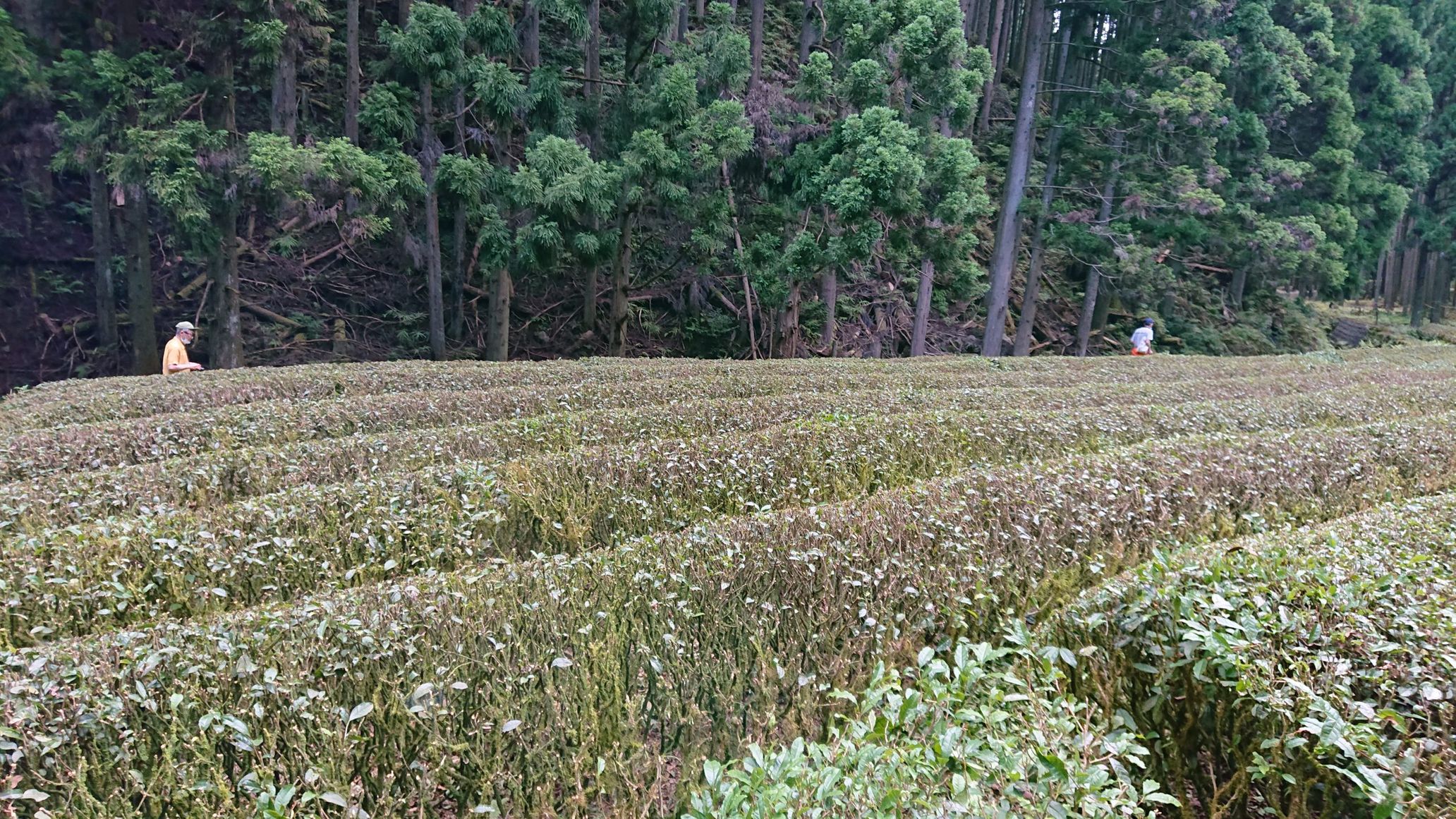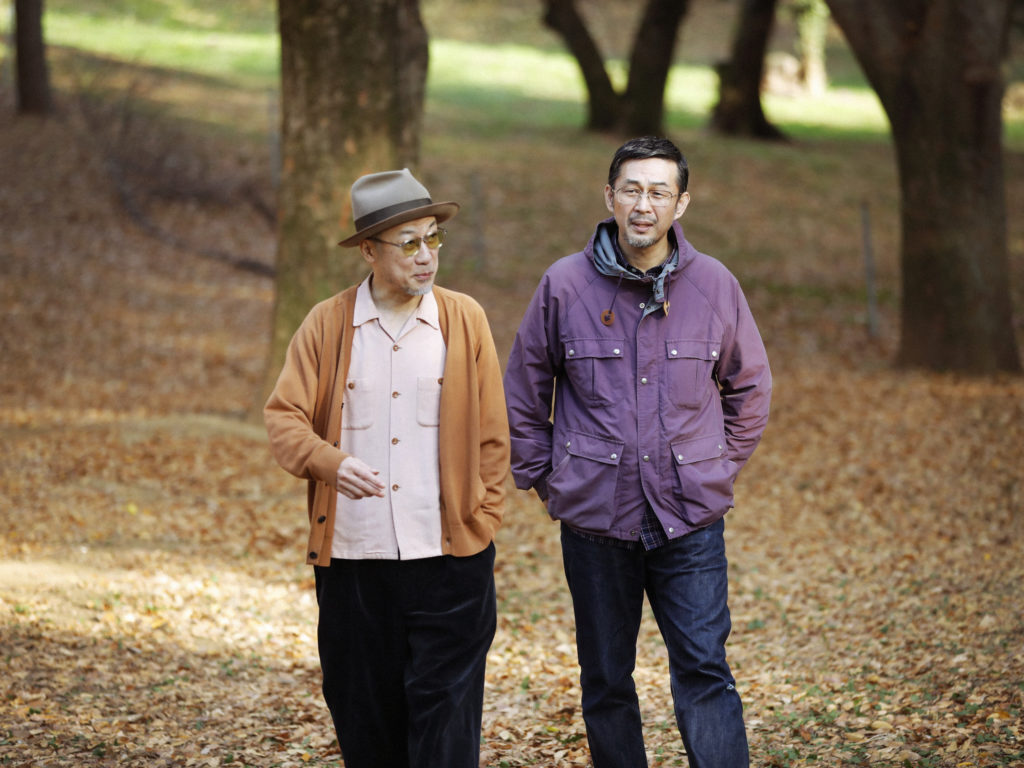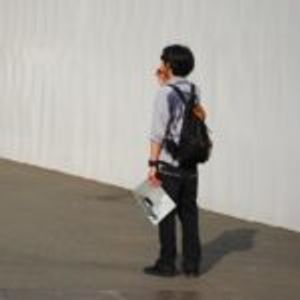COMPUMA and Ken Takehisa (a member from the band KIRIHITO) will be dropping an album titled Reflection; after five years since they last released an album.
Their latest effort is made in commemoration of the 155th year anniversary of the historic tea company in Kyoto, Ujikoen. In 2015, Ujikoen started an ongoing project called “Tealightsound” entailing the theme “the conflation of the art of tea, light and sound”—The record is made to take part in and as an exclusive content of the serialized project.
The duo also embarked on the project five years ago, releasing an album SOMETHING IN THE AIR-the soul of quiet light and shadow layer-. For their previous record, which by the way is presented with the prominent sounds of the guitar and electronics, the two made a trip to the tea plantation in Kyoto and did a field recording; however, the memorable plantation subsequently abandoned in 2015.
COMPUMA and Ken Takehisa both went back to the abandoned plantation to produce Reflection. What were their inner dialogs? How did they reshape their metal imagery? During the pandemic in 2020, how did the tea plantation reflect in their eyes, and were they moved by the scenery? The two musical mavens spoke to us about the stories behind the production.
After Re-encountering and Reuniting with The tea plantation in Kyoto
――Ultimately, all the songs in the new album, Reflection, are field recorded. First, could you tell us about the essences of this album?
COMPUMA: As I’m originally a record buyer with years of experience, I’ve been handling music of various genres and discovered some experimental tracks. Out of the eclectic catalogue, I found out about field-recording and was fascinated by the sounds of it. I gradually became interested in creating music with the method and eventually released our previous [field-recording] album, which turns out to be five years younger than our latest album Reflection.
――By previous album, you mean SOMETHING IN THE AIR-the sound of quiet light and shadow layer- which is the memorial album of Ujikoen’s 150th anniversary and the first album of the “Tealightsound” series, released back in 2015, right?
COMPUMA: Yes. For the previous album, we focused on conveying the sacred attractivity of the tea plantation and capturing its bona fide atmosphere by field-recording. We also formed into a mixed-CD-like structure and sequenced the tracks seamlessly into one flow. On the other hand, regarding the new record, field-recording is not the main subject, and we wanted each track to be sort of independent—Those are the biggest differences between the two records.
In the process of making the new album, we both shared and combined our images of the tea plantation. We were constantly adding and subtracting our ideas, images, and expressions until we achieved a satisfying result.
――In the production process, how did you two divide the work?
COMPUMA: Other than producing the songs, I would say I was responsible for making a blueprint of the album. I would adopt Ken’s ideas and build them into the structure, decide which materials (songs) to use as there were some that needed to be kept for other prospective projects and plan out to be done within the allocated time frame. I was portraying the entire picture in my head, and in order to succeed, I had to be objective.
――Meanwhile, you (Takehisa) had to make a concise image of the guitar part, how did you roll with the production?
Ken Takehisa (Hereinafter Takehisa): The opportunity of revisiting the tea plantation for this production gave me a lucid concept of “re-encounter.”
When we revisited the place, I was dumbfounded by how it had changed; later I came up with guitar phrases and melodies to construe my emotions at the plantation. For the first two months, I recorded my ideas that would suit the project, sent the collection to COMPUMA to get feedback from him, and brushed up the ones with good responses. The more we garnered the pieces for the album, the more I became motivated and conceived new scenes (tracks) that would fit well in the entire picture. I had fun following and feeling the flow of the project and its narrative.
――Your inspiration from the tea plantation is interpreted in Reflection. When did you visit the abandoned tea plantation in Kyoto? Also how did you feel when you saw the place?
COMPUMA: We went back to the plantation towards the end of June 2020. We were there for two days for recording. Five years ago, we had to go to the plantation many more times and required so much time as we had to start from finding the perfect spot that picked up the sounds clearly. However, on our second journey, we were able to finish the recording in a short period of time. We couldn’t stay there for too long anyway considering the risk of Covid. We were told that the plantation is at the most beautiful lush state in June, yet, as it has been five years since it abandoned and it was during the rainy season, the plantation was like a dilapidated jungle.
Takehisa: I think fundamentally my impression towards the plantation was the same as our first visit, but I have to say that the view was more profound this time.
COMPUMA: I agree, that’s well put. We don’t mean it in a negative way, though. The words that Ken mentioned earlier, “re-encounter” and “reunion” resonated strongly in my head this time. Now that I think back, as we were in the self-isolation period, I was especially euphoric to be out in such a surreal location. It was exciting to be surrounded by the power of nature.
TAKEHISA: Ditto! Also, both last time and this time, I felt a bit impish like we were in a furtive place…
The Album Embraces the Story Concocted by The Sounds of The Mountain
――When you say, “a furtive place”, does that mean an inviolable area or somewhere sacred?
COMPUMA: I don’t want to sound like the plantation is extremely spiritual or apotheotic, but I would say it exudes that type of mood. I actually had an unforgettable experience at the place: When I was field-recording, all alone at the top of the hill killing my breath, I heard sounds of distant grass footsteps. At first, I thought it was Ken and looked around but no one was there. Then I heard the same sound over and over again… I started feeling anxious and creeped out, but I couldn’t move as I was still recording.
――You didn’t want the mic to pick up your sound.
COMPUMA: That’s right. I peered around to find out where the sound was coming from, and soon after a wild deer and a fawn appeared. I was relieved and surprised at the same time. My mind was imploding the entire time! Suddenly, the deer cried out loud and was in a defensive posture. They are normally known to be innocuous, but you never know; I wouldn’t be able to fight back if they attacked me with their antlers. So, there we were staring at each other for a while (Laughs) . After an intense moment, the deers left into the woods. I was relieved but felt sorry for them. I felt bad that I had scared them off. This whole interaction is captured in the recording, so I mixed it towards the end of the second track “Decaying Field”—It’s definitely the most authentic documented soundscape (Laughs) .
TAKEHISA: We were in fact intruders to them (the wild deers.) They were probably freaking out thinking “who’s there? What are they up to?”
――Back to the conversation about the albumーWe felt the unique flow of starting from “The Back of the Forest”, moving on to the enigmatic “Decaying Field”, then to the cathartic third track of “Nostalgia” with the unbridling guitar melody.
COMPUMA: Earlier, we mentioned that the order of the songs was decided towards the end of the production, but we kind of knew from the start that “Decaying Field” should be towards the beginning. We also had a broad idea of developing the story from “Nostalgia.”
――Personally, the most significant track was the final song “Enka (Twilight Zone.)” The word “Twilight Zone” in the subtitle means “an intermediate area”—does it refer to an area in between reality and the tea plantation?
COMPUMA: To be honest, there’s no deep meaning behind it (Laughs) . We merely wanted to add the word “Twilight Zone” to the title. It has multiple meanings—an undefined place, time and epoch—and we thought the word was perfect to describe the ethereal atmosphere of the plantation. But I guess it could directly mean an intermediate area between the tea plantation and reality.
For this final song, there’s a humming melody that makes it…I don’t know how to say…maybe “poetic?” It was a challenging piece in terms of expression.
The title “Enka” is devised to have a double meaning: One is simply Enka as the traditional Japanese music genre, and another is “a glistening song.” Anyway, it’s complex (Laughs) .
(Ujikoen/SOMETHING ABOUT)
Discovering the Frolicsome Nature in The Mountain Louder Than the World Today
――The cover art of the album is designed by Satoshi Suzuki using Tomoo Gokita’s illustration, the same artists from the previous record cover SOMETHING IN THE AIR -the soul of quiet light and shadow layer-.
COMPUMA: Yes. Actually Mr. Gokita drew the illustration of Reflection five years ago and gave it to us together with the one from the previous record. We’ve decided to use this one for our new album from the very beginning, even before starting with the production. We had elaborated our ideas based on the drawing; so, to speak, the illustration is the mainstay of this album.
Takehisa: The artwork is exceptionally perfect for the theme of this album.
COMPUMA: Yes, it’s as if Mr. Gokita predicted this new album five years ago. It really makes us think so.
――Reflection is being released during the global pandemic. Do you think the way you express yourself and the contents you deliver have changed living in a life coexisting with Covid?
Takehisa: Of course. As there are less gigs and chances of performing in front of people, it gave me time to reckon and assess what I wanted to do. Although being under the circumstance, given a theme and opportunity of creating Reflection was a fluke.
COMPUMA: Likewise. I was happy to be part of the production. I was also in the same situation as Ken—I didn’t get a chance to DJ since spring, and stayed home, living the life of quarantine. Since I had more spare time, I read books that I hadn’t been able to start, which inspired me to deeply reflect on the art of listening to music and the world of soundscape. In Tokyo, normally the city lacks “tranquility” due to the ongoing urbanization, but because of Covid, the city has become quieter and I felt the soundscape of the world regaining its quiet time and space. This sentiment is portrayed in Reflection. Back when we visited the tea plantation in June, although it is in the outskirts of the city, as we were recording in the mountain and listening carefully to the sounds of the nature living and breathing, the place started to sound louder than in the main city. Through the recording process and Covid, we were able to notice and pay attention to the aesthetics of insouciant things in our lives—it was a remarkably interesting experience.
COMPUMA (Koichi Matsunaga)
Born in 1968, in Kumamoto. A prolific DJ who has performed with and opened for numerous artists and DJs not only from Japan but from around the world.
Recognized for his own project, SOMETHING ABOUT; by producing the serialized cutting-edge soundscape mixed CDs, Something In The Air; as a member of the DJ trio Akuma-no-numa; and for releasing various DJ mixes of both originals and remixes.
http://compuma.blogspot.jp/
Ken Takehisa
Known professionally as a guitarist, lead singer, composer, and producerーThe guitarist, lead singer, and synth of the band KIRIHITO, and the guitarist, composer or the “idea-generator “of the instrumental band younGSounds. Also recognized as an esteemed live and studio session musician, who has worked with eminent artists including UA, FLYING RHYTHMS, Illreme, Hitomitoi, Yakenohara, and Dengaryu.
http://www.takehisaken.com/
Photography Shinpo Kimura
Text Ryo Tajima
Translation Ai Kaneda

